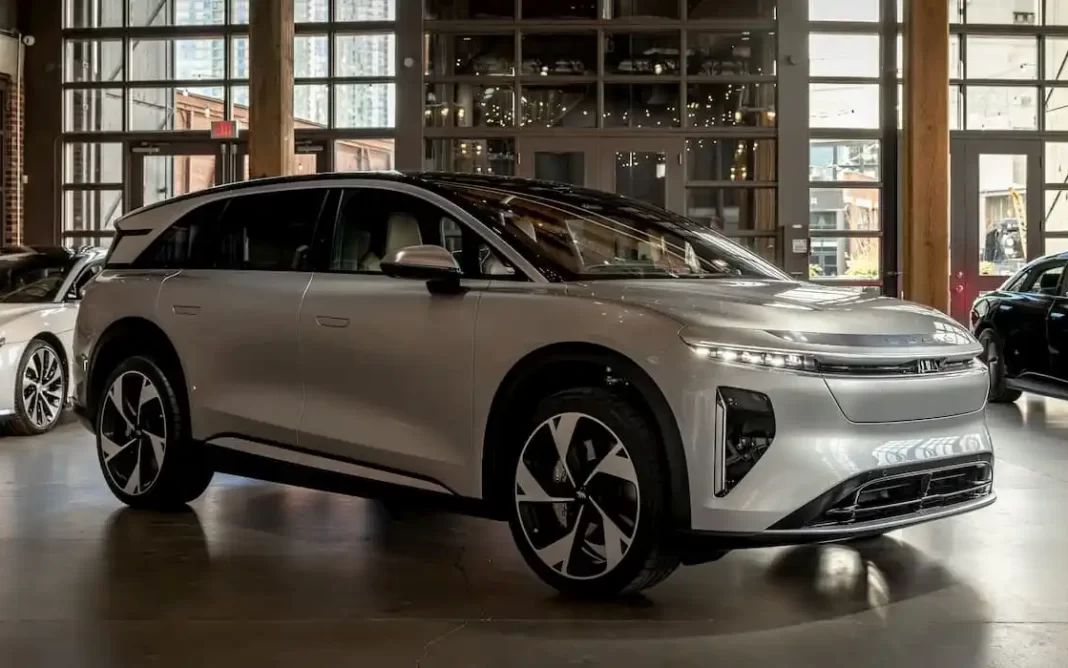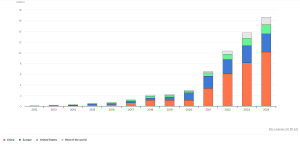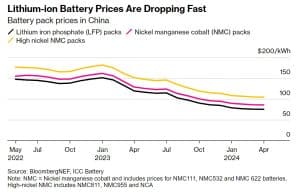Lucid Motors has secured an additional $1.5 billion investment from Saudi Arabia, as announced alongside the company’s Q2 2024 financial results. This injection of funds aims to boost the production of Lucid’s new electric vehicle (EV), the Gravity. It will also expand the company’s factory in Saudi Arabia, which is expected to have an annual capacity of 150,000 vehicles.
The investment comes from the American automaker’s major shareholder, Ayar Third Investment Co., an affiliate of Saudi Arabia’s sovereign wealth fund, the Public Investment Fund (PIF).
Following the announcement, Lucid’s shares rose about 6% in extended trading, despite a 3.9% drop during regular trading hours. Tesla’s rival also reported its second-quarter financial results for the period ending June 30, with revenue of $200.6 million and the delivery of 2,394 vehicles. The company ended the second quarter with about $4.28 billion in total liquidity.
Lucid Takes A Financial Boost
PIF’s investment includes $750 million in convertible preferred stock through a private placement and a $750 million unsecured delayed draw term loan facility, subject to certain conditions. This financing aligns with PIF’s strategic goal to become a global investment powerhouse and drive Saudi Arabia’s economic transformation by creating new sectors and opportunities that can shape the future global economy.
Half of this investment will be provided as a loan. In contrast, the other half will be exchanged for convertible preferred stock by Ayar Third Investment. This marks the second investment from Saudi Arabia this year, bringing the total investment in Lucid to about $8 billion, with the country’s stake in Lucid now at about 60.
Lucid CEO Peter Rawlinson stated that these new funds will ensure liquidity at least until the fourth quarter of 2025.
The Saudi plant, which began operations last fall, currently assembles semi knocked-down units of the Air sedan at a rate of 5,000 units annually. The long-term goal is to achieve full production of Lucid vehicles at an annual rate of 150,000 units.
Meanwhile, Lucid’s primary facility in Casa Grande, Arizona, also responsible for Air sedan production, aims to reach an annual capacity of 365,000 units once fully expanded. The Arizona plant will also begin producing the Gravity SUV later this year.
Fueling Lucid’s Ambitious EV Expansion Plans
Despite these ambitious plans, Lucid still faces significant challenges in scaling up production. The company manufactured only 2,110 vehicles in the second quarter and is on track to produce about 9,000 vehicles this year, compared to 8,428 vehicles produced last year.
Compared to the EV giant, Tesla, the full EV maker reported delivering 443,956 vehicles in Q2 2024 and produced 410,831 vehicles. Globally, EV sales reached an all-time high in the second quarter of 2024, with a 19% increase from the first quarter, according to New AutoMotive’s Global Electric Vehicle Tracker.
- INTERESTING READ: EV Wars and Breakthroughs: BYD to Overtake Tesla, CATL’s New Battery With 1.5M KM Range
Moreover, nearly 2.6 million EVs have been sold globally since May 2024, with China’s domestic market driving much of this growth.
Since 2021, first-quarter EV sales have typically accounted for 15-20% of total global annual sales, per the International Energy Agency data. Based on this trend, combined with policy momentum and typical seasonality in EV sales, estimates suggest that electric car sales could reach around 17 million in 2024.
Electric Car Sales, 2012-2024
This projection indicates robust growth for a maturing market, with 2024 sales expected to surpass those of 2023 by more than 20%, resulting in EVs comprising more than one-fifth of total car sales.
In the United States, EV sales could rise by 20% in 2024 compared to the previous year, according to the IEA. This increase translates to almost half a million more sales relative to 2023. Despite a rocky end to 2023 for EVs in the U.S., sales shares are expected to remain strong in 2024, with projections indicating that around one in nine cars sold will be electric throughout the year.
More EV models become available but the trend is towards the bigger ones. The number of available EV models is nearing 600, with ⅔ of these being large vehicles and SUVs, IEA reported.
Scaling New Heights: Lucid’s Strategic Growth in the EV Market
The Gravity was officially unveiled in November, with Lucid stating it “heralds the dawn of a new era for electric SUVs” by offering over 440 miles of range. This full-size electric SUV features a luxurious interior with three rows, providing ample room for seven adults and their belongings.
The luxury electric SUV is powered by Lucid’s next-generation technology, which is an evolution of the award-winning tech found in the Air sedan.
Lucid’s CEO, Peter Rawlinson, emphasized that the Gravity SUV represents a significant advancement in the company’s technology and design. Despite its long-range capabilities, the Gravity’s battery pack is “a little more than half the size of some of our battery-hungry competitors.” This is crucial as the market for lithium, a key element that powers EV batteries, is in limbo.
Lithium prices keep dropping with no quick recovery in sight per the experts advice. BloombergNEF predicts that low lithium battery prices will persist for several years, significantly impacting the automotive industry. This extended period of affordability is expected to drive further adoption of electric vehicles.
As lithium battery costs remain low and with the significant investment announced, the economic feasibility of Lucid’s electric SUV holds strong. It strengthens Lucid’s financial position and supports its mission to accelerate the global shift towards sustainable transportation and energy.




